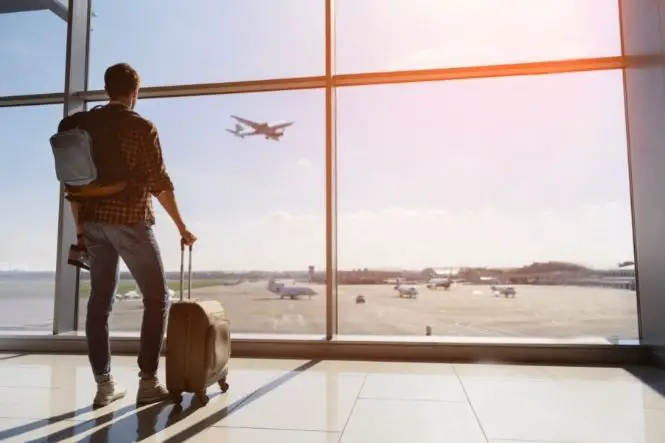If you are deaf or have a hearing impairment and will require assistance at the airport it is advisable to inform your travel agent or the airline company you are travelling with as soon as possible so that they may make the necessary staffing arrangements. It is best, if at all possible, to give them at least 48 hours notice.
Assistance can be arranged to help you at check-in, custom controls and baggage check. Additionally, you can request that a member of staff informs you personally as soon as information is announced regarding your flight. The majority of public address systems at airports should include induction loop facilities, which will amplify the sound when you use the ‘T’ switch on your hearing aid. In many airports, text telephones and public telephones fitted with induction loops should be available.
When onboard the plane it is recommend that you make the cabin crew aware of your impairment in order that they can ensure that you are made aware of any important announcements during the flight, such as if the plane has to make an emergency landing or is suffering from a delay. Information videos shown on the plane should have subtitles and you may be able to use an induction loop to listen to public announcements. Some airlines will allow deaf passengers to board first, so that the cabin crew can explain the safety procedures to them prior to the other passengers boarding.
If you plan to take your assistance dog with you on the flight it is essential that you tell the airline about this in advance. The airline operator may request you to provide evidence that your dog has been trained by a recognised dog training organisation. In the UK these organisations are members of Assistance Dog UK.
Before booking your flight ticket you should always check the airline’s policy on carrying assistance dogs. There should be no charge for taking your assistance dog on a flight and your dog should be able to stay with you in the passenger cabin. A car safety harness should be taken on the plane to enable your dog to be secured during take off and landing. Your dog should also carry an identity tag
Travelling With An Assistance Dog
When taking your assistance dog on international flights to other European Union countries it is worth considering the Pet Travel Scheme (PETS). This will help you avoid long periods of quarantine when you return to the UK. However,not all airlines operate the scheme, so check beforehand. Unlike other dogs that fly with PETS, assistance dogs are allowed to travel in the passenger cabin with their owner.
To prepare your dog under the Pet Travel Scheme the dog must be, microchipped, vaccinated against rabies and have a blood test. In addition your dog must be issued with a pet passport and have treatment for ticks and worms.The order this is needed to be done and can vary from country to country, so always check prior to preparing your dog for the flight.
As dogs infected with rabies can take 6 months to show physical symptoms of the disease, your dog may not enter or re-enter the UK under PETS until 6 calendar months have passed since a blood sample was taken. It is important that you ensure that the microchip can be read before and after it has been fitted to your dog.

